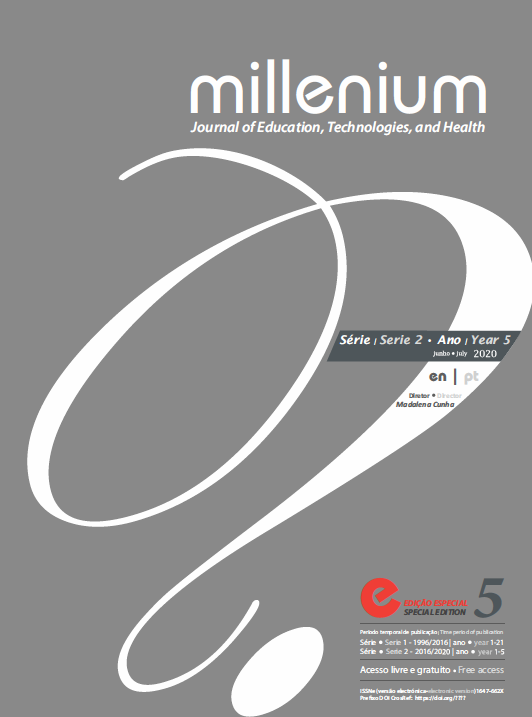Pregnant and breastfeeding in the workplace
DOI:
https://doi.org/10.29352/mill0205e.15.00307Keywords:
woman, pregnancy, lactating, job, occupational healthAbstract
Introduction: Pregnant working women are considered to be a vulnerable group, so appropriate interventions must be developed to promote and protect both maternal and child health. Moreover, it can satisfy not only workers, but also employers and facilitate their return to work.
Objectives: Analyze the conditions of the workplace in terms of occupational health provided to pregnant women and breastfeeding women.
Methods: A classic research of scientific literature was carried out, using the Google Scholar search engine, the electronic databases of Portuguese repositories and the Portuguese Nurses Order website.
Results: Several laws have been established to outline the rights of pregnant and lactating women in different countries, but signs of discrimination and non-compliance remain. It is important to approach pregnancy at work in a proactive way, moving towards organizational change that occurs with the support of employers. Pre-pregnancy investigation of work conditions and risks that may have harmful effects on pregnant women is recommended.
Conclusions: It is essential that occupational health professionals act, promoting positive attitudes towards pregnant women, while supporting employers in adapting the work environment to pregnant women.
Downloads
References
Comissão para a Igualdade no Trabalho e no Emprego (s.d.). Mulheres e homens: Trabalho, emprego e vida familiar. Acedido em http://www.cite.gov.pt/pt/acite/mulheresehomens.html
Decreto-Lei nº 70/2000. (2000, Maio 04). Paternidade e maternidade [Portugal]. Diário da República, 1(103), pp. 1825-1831. Acedido em http://dre.pt/pdf1s/2000/05/103A00/18251831.pdf
Decreto-Lei nº 91/2009. (2009, Abril 09). Montante do subsídio parental inicial [Portugal]. Diário da República, 1(70), pp. 2194-2206. Acedido em http://dre.pt/pdf1s/2009/04/07000/0219402206.pdf
Godoy, M. B., Gomes, F. A., Stefanello, J., Monteiro, J. C. S., & Nakano, A. M. S. (2011). Situação trabalhista da mulher no cíclico grávido-purperal. Investigación y Educación en Enfermería, 29(1), 47-53. Acedido em http://bases.bireme.br/cgi-bin/wxislind.exe/iah/online/?IsisScript=iah/iah.xis&src=google&base=LILACS&lang=p&nextAction=lnk&exprSearch=587943&indexSearch=ID
Júnior, J. B. O. (2012). Medicina do trabalho e perícia médica: Visão cível, criminal, trabalhista e previdenciária (2ª ed.). São Paulo: Santos Editora.
Lei n.º 102/2009. (2009, Setembro 10). Regime jurídico da promoção da segurança e saúde no trabalho [Portugal]. Diário da República, 1(176), pp. 6178-6179. Acedido em https://data.dre.pt/eli/lei/102/2009/09/10/p/dre/pt/html
Moreira, A. (2010). Segurança e saúde no trabalho: Em ambiente de escritório. Lisboa: Edições Técnicas.
Oliveira, A., & André, S. (2010). Enfermagem em saúde ocupacional. Millenium,41, 115 -122. Acedido em http://www.ipv.pt/millenium/Millenium41/8.pdf
Portugal, Ministério da Saúde, Direção Geral da Saúde. (2013). Programa nacional de saúde ocupacional. Lisboa: DGS. 2013. Acedido em http://www.dgs.pt/saude-ocupacional/programa-nacional/pnsoc-2013-2017.aspx
Salihu, H. M. Myers, J., & August, E. M. (2012). Pregnancy in the workplace. Occupational Medicine, 62, 88-97. DOI: 10.1093/occmed/Kqr198. Acedido em http://www.ncbi.nlm.nih.gov/pubmed/22355087?dopt=Abstract
Downloads
Published
How to Cite
Issue
Section
License
Authors who submit proposals for this journal agree to the following terms:
a) Articles are published under the Licença Creative Commons (CC BY 4.0), in full open-access, without any cost or fees of any kind to the author or the reader;
b) The authors retain copyright and grant the journal right of first publication, allowing the free sharing of work, provided it is correctly attributed the authorship and initial publication in this journal;
c) The authors are permitted to take on additional contracts separately for non-exclusive distribution of the version of the work published in this journal (eg, post it to an institutional repository or as a book), with an acknowledgment of its initial publication in this journal;
d) Authors are permitted and encouraged to publish and distribute their work online (eg, in institutional repositories or on their website) as it can lead to productive exchanges, as well as increase the impact and citation of published work
Documents required for submission
Article template (Editable format)





